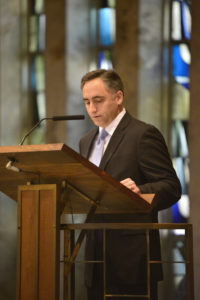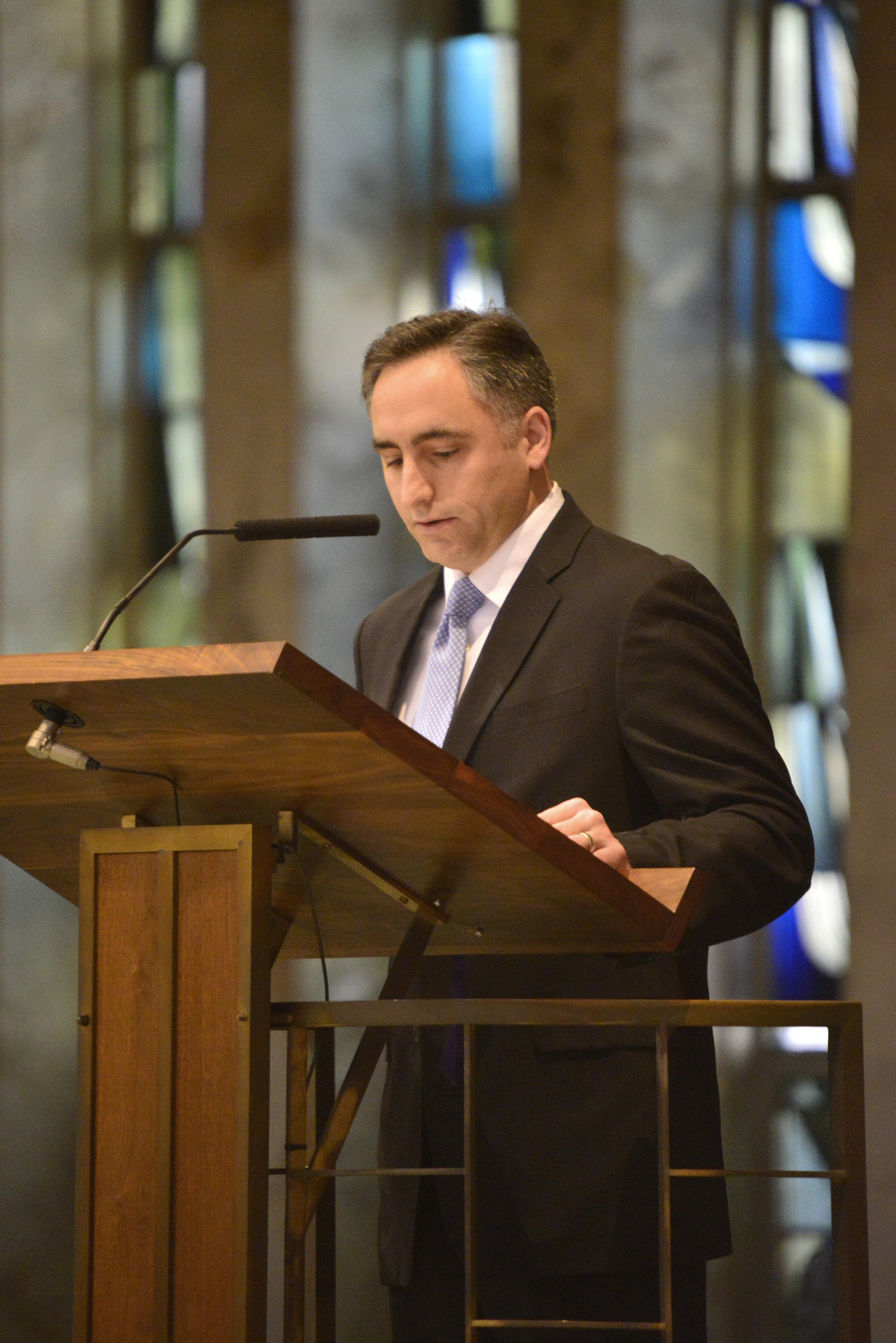 They have been called by many names: the prayer of the faithful, the general intercessions, and now most commonly the universal prayers.
They have been called by many names: the prayer of the faithful, the general intercessions, and now most commonly the universal prayers.
But they are not the prayers of the faithful since they are usually written by an individual. They are really general intercessions, since they are often rather specific, and they are not universal in the sense that they are, by necessity, particular. It would be impossible to cover the full or universal range of human needs. So even the nomenclature of this part of the Mass is difficult to pin down. This, in turn reflects a merely vague understanding of the purpose of these prayers.
Further, there is an often disappointing quality to the intentions as they are used today. Some years ago, Peter Kwasniewski, in an article at New Liturgical Movement.org (here), summarized the problem very well.
It is surely no exaggeration to say that throughout the world the quality of these intercessions has tended to be deplorable, ranging from trite and saccharine sentiments to political propaganda, from progressivist daydreams to downright heretical propositions to which no one could assent without offending God. Even when the content is doctrinally unobjectionable, all too often the literary style is dull, flaccid, rambling, or vague. … [There is] problematic content, poor writing, and [a] monotonous manner of delivery.
Additional problems occur when there are people of many different nationalities present and it is felt necessary to have the petitions read in multiple languages. The impression is given that the intentions are directed more to the congregation than to God, who knows all languages and thoughts. I have been at Mass in the Basilica here in Washington, D.C. when as many as nine different languages were used in the Prayer of the Faithful, despite the fact that the vast majority of those present spoke English and/or Spanish. I seriously doubt that there were more than five people in attendance who could speak only German, Mandarin, or one of the other languages used. It quickly gets very tedious as a line of people traipse back and forth to the microphone. Is God the focus of these prayers or are we, in a self-referential concern just checking the diversity box?
It is all so different in the Eastern Liturgies, in which the Great Litany is so artfully woven into the liturgical experience and beautifully sung as well. I have memorized the Great Litany from the Liturgy of St. John Chrysostom (see video below).
History – These intentions were very common in the early Church, occurring at about the same point in the Mass as today. They followed the Homily (note that in earlier days the Creed was typically not said). All of the Fathers of the Church make mention of them. In the beginning, this prayer was recited antiphonally by the priest and the assembly. Over time, the deacon assumed a more prominent role; he announced all the intentions and then the faithful responded with Kyrie eleison or some other acclamation. You can read the Kyrie Litany of Pope Gelasius here: Litany of Gelasius
These intercessions endured until about the 9th century, well past the close of the patristic period. Their disappearance seems to coincide with their evolution into a Kyrie litany and their transfer to the beginning of the Mass. They eventually came to be regarded as an unnecessary appendage and were phased out. In the West they were used only on Good Friday, though they endured longer in certain particular areas. In the East they were never dropped. Today they have been restored to their original place in the Mass, but as noted, are difficult to craft in such as way that they feel integrated more than interruptive, as something to get through, rather than as something that flows from our liturgical experience
In his article (here), Mr. Kwasniewski offers a variety of intercessions, and download links are provided. I have done so for my own use and you might wish to do the same.
I would also like to add that St. Peter Canisius composed intercessions for use in his time. Saints are certainly reputable sources of such things! Here is an article by Mark Woodruff that details those prayers.
The point is that much can be done to improve the quality of the Prayer of the Faithful, which has remained an amateur outing at best and an ideological hornet’s nest at worst.
Perhaps some benefit can be obtained from reviewing the norms and the history of this portion of the Mass.
The General Instruction in the Roman Missal (GIRM) has this to say about the Prayer of the Faithful:
In the Prayer of the Faithful, the people respond in a certain way to the word of God which they have welcomed in faith and, exercising the office of their baptismal priesthood, offer prayers to God for the salvation of all. It is fitting that such a prayer be included, as a rule, in Masses celebrated with a congregation, so that petitions will be offered for the holy Church, for civil authorities, for those weighed down by various needs, for all men and women, and for the salvation of the whole world. As a rule, the series of intentions is to be
-
-
- For the needs of the Church;
2. For public authorities and the salvation of the whole world;
3. For those burdened by any kind of difficulty;
4. For the local community.
- For the needs of the Church;
-
Nevertheless, in a particular celebration, such as Confirmation, Marriage, or a Funeral, the series of intentions may reflect more closely the particular occasion.
It is for the priest celebrant to direct this prayer from the chair. He himself begins it with a brief introduction, by which he invites the faithful to pray, and likewise he concludes it with a prayer. The intentions announced should be sober, be composed freely but prudently, and be succinct, and they should express the prayer of the entire community (GIRM 69-71).
In the end, I think these intentions deserve better than we have given them. I realize that enthusiasts of the Traditional Latin Mass (of which I am one) may say, “Just get rid of them entirely,” but that is not realistic. They are here to stay, at least in our lifetime. Maybe we can try to do better by making use of multiple sources: ancient, Eastern, and modern yet elegant. I
Here is the Great Litany from the Liturgy of St. John Chrysostom:


Thank you for another thoughtful post, Monsignor! I treasure the Great Litany from the Liturgy of St. John Chrysostom; memorization is still within my abilities, and I will make an effort on that. Have you seen the traditional Anglican prayer for “the whole state of Christ’s Church militant here on earth”? It appears to meet the requirements of the GIRM with minimal adaptation.
they need to be put out to pasture…….. all we get is the michigan bundle from parish to parish of “this assembly”.
if i attend one more of the “this assembly” liturgical nightmares, i’m going to wear my high school gym clothes and request that we do our best hs cheer as “this assembly”….
the best i’ve ever come across are a three year series from liturgical press that consider the Scriptures and are fully adaptable to the community at hand….. sadly, after leaving behind a full set of these, the heir apparent threw them away as it was easier to use the “plastice binder stuff” from michigan……..(which should all be burned at the easter vigil fire!)
they’ve become the bane of our language, chesterton would grind his chops at what we’ve done to the “language of the Holy Sacrifice”.
I hate them.
Geese, I thought it was just me who felt entirely weighed down, cringing, and sometimes I feel it’s not right to say “Lord, hear our prayer” because it’s a ridiculous petition. It’s the Mass, and all these anemic intentions are being rattled off. It’s horrible, and I imagine offensive to God. Thank you for this. I can unburden myself now.